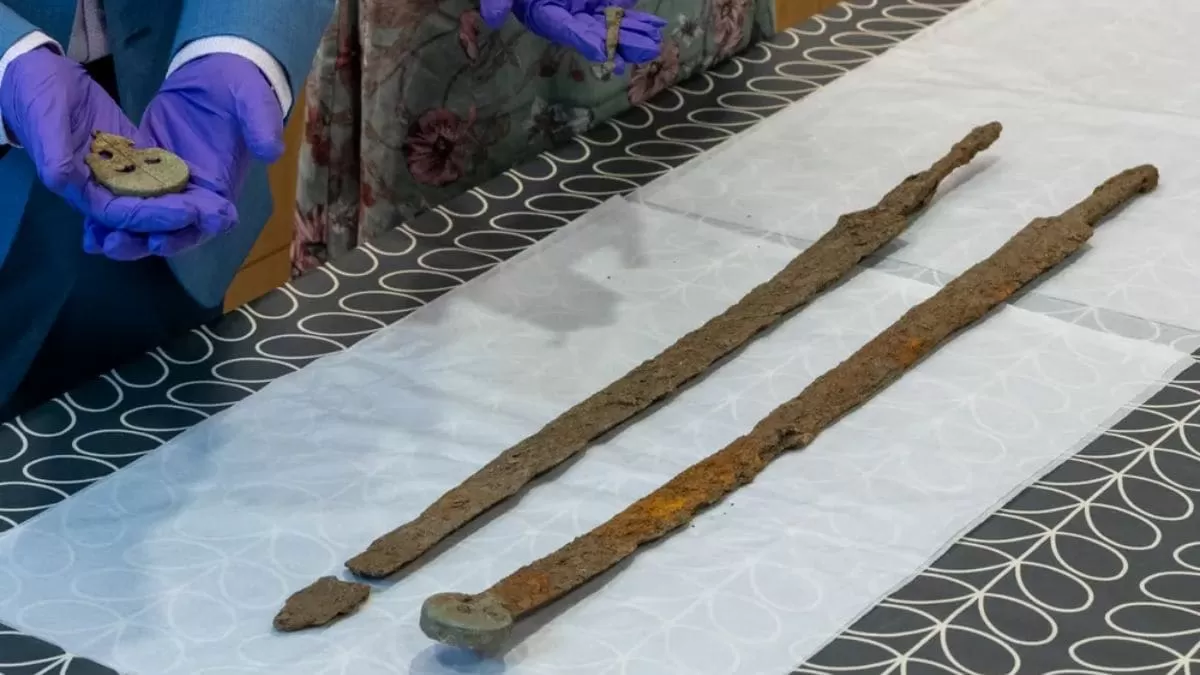A nearly 2,000-year-old sword has been discovered in Poland’s Jura region, shedding light on the ancient burial rituals of the Vandals. The double-edged spatha, believed to have belonged to a Vandal warrior, was found in three pieces and placed on a cremation pyre, providing a glimpse into the customs and beliefs of this mysterious tribe.
The discovery was made by a team of archaeologists from the Częstochowa Museum, who were conducting excavations in the area. The sword, which dates back to the 1st or 2nd century AD, was found in a burial mound, along with other artifacts such as pottery and jewelry. The location of the discovery is being kept confidential while experts continue to analyze the artifact.
According to Dr. Anna Kowalska, the head of the excavation team, the sword was intentionally broken into three pieces and placed on the pyre as part of a burial ritual. This practice was common among the Vandals, a Germanic tribe that inhabited parts of Europe during the late Roman Empire. The Vandals were known for their fierce warrior culture and their raids on Roman territories, making this discovery all the more intriguing.
The spatha, which measures over 80 centimeters in length, is a type of long sword commonly used by the Vandals and other Germanic tribes. It was a symbol of status and power, often adorned with intricate designs and inscriptions. The fact that this sword was found in a burial mound suggests that it belonged to a high-ranking member of the Vandal society, possibly a warrior or a chieftain.
The discovery of this ancient sword has sparked excitement among archaeologists and historians, as it provides valuable insights into the customs and beliefs of the Vandals. The Vandals were a nomadic tribe, and little is known about their burial practices. This find not only sheds light on their rituals but also raises questions about their presence in the Jura region of Poland.
The sword is currently undergoing extensive analysis at the Częstochowa Museum, where experts are examining its composition, design, and possible origins. This process will help determine the sword’s age and its significance in Vandal culture. The museum plans to display the sword and other artifacts from the burial mound in a special exhibition, providing the public with a rare opportunity to see this piece of history up close.
The discovery of this sword also highlights the importance of preserving and studying our past. The Jura region of Poland is rich in history, with numerous archaeological sites that continue to reveal new information about our ancestors. The Częstochowa Museum has been at the forefront of these discoveries, and their dedication to preserving and sharing these artifacts is commendable.
The find also serves as a reminder of the enduring legacy of the Vandals. Despite being a relatively obscure tribe, their influence can still be seen in modern-day Europe. The term “vandalism” is derived from their name, reflecting their reputation as destructive raiders. However, this discovery shows that there is much more to the Vandals than their infamous reputation.
In conclusion, the discovery of this nearly 2,000-year-old sword in Poland’s Jura region is a significant find that provides a glimpse into the ancient burial rituals of the Vandals. The intentional breaking of the sword and its placement on a cremation pyre speaks volumes about the beliefs and customs of this enigmatic tribe. The ongoing analysis of the artifact will undoubtedly reveal more about its origins and significance, adding to our understanding of the Vandals and their place in history.

